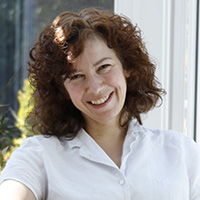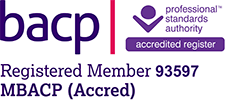Meditation in Cheadle near Stockport and South Manchester
 Modern life is stressful with
people living life at an ever increasing pace. I believe that incorporating
meditation into your life will bring about gradual but significant changes
to your life. There are many types of meditation eg visualisation, mindfulness,
counting your breaths, mantra chanting, body scan, mindful movement. When
appropriate we can include meditation techniques in the counselling sessions.
Modern life is stressful with
people living life at an ever increasing pace. I believe that incorporating
meditation into your life will bring about gradual but significant changes
to your life. There are many types of meditation eg visualisation, mindfulness,
counting your breaths, mantra chanting, body scan, mindful movement. When
appropriate we can include meditation techniques in the counselling sessions.
What are the benefits of meditation?
- Practising meditation will bring a window of stillness to your life - a place of being at one with yourself and your place in your world; a place of calm amid the sensory overload of modern living. As humans we are interdependent with nature and each other. Meditation can give us more balance and equanamity in our lives and as we become more attuned to our senses and more connected to nature, we become more receptive to the simple joys that life can offer.
- Learning to be aware of ourselves, observe our thoughts and accept ourselves fully - without judgment- in the present moment is liberating and will promote an overall sense of emotional, mental and physical well being.
- Focusing your attention /awareness on your body sensations in the here and now can help you develop a greater connection between mind and body. This can help you feel a greater connection to yourself, others and to the world around you. Being aware of the bigger picture can help soothe our whirring minds.
- Grounding techniques (becoming aware of what is happening internally and externally in the present moment) can help us become in tune with the experience of all our senses. Connecting to both our senses and the Earth beneath our feet allows us to fully be ourselves. We are human beings, not human doings!
- Accepting that difficult feelings(eg anger, depression, anxiety, stress) will pass and that it is the nature of the mind to be frenetic can help us to break negative thought patterns .
- Focusing your attention on your here and now experience can reduce stress, depression and anxiety as well as alleviating the symtoms of physical pain, headaches, migraines and tension in the body. Meditation can also help addictions, self harm and eating disorders as well as people who have suffered a bereavement.
- Accepting that stress/being vulnerable is an inevitable part of being human allows us to nurture and soothe ourselves.
- Focusing your attention on your breath mindfully can help to soothe mental stress by bringing you into the present moment. We breathe 23,000 times every day, but most often, we are unaware of our breath.
- Turning towards our stressed, anxious, depressed or overwhelmed feelings can reduce our fear of our feelings and helps us to accept ourselves just as we are in the here and now.
A visualisation meditation
Here's an example of a visualisation meditation that includes some mindfulness techniques :Step 1. Sit with your feet flat on the floor or sit cross legged on a hard surface. Make sure your back is straight and your neck is tucked in. Rest your hands, palms facing upwards, on your knees or in your lap.
Step 2. Focus on your body sensations. Scan your body for any tension or heaviness - in your head, your shoulders, your throat, your arms, your chest, your legs and your feet. Notice these sensations without judgment. Accept them as they are. There's nothing to do. Just notice where your body is tense ; where your body is relaxed.
Step 3. Be aware of any feelings. Notice where they are in your body - whether they are in your shoulders, your throat, your tummy - just notice and accept them. There's nothing to do. Imagine these feelings like leaves falling or like clouds floating by or maybe think of your feelings like waves on a beach - coming in and then going out.
Step 4. Feel your body supported firmly by the chair or floor. Notice what you can hear - maybe the birds singing or traffic outside -; notice what you can smell and taste; notice what you can feel - the air on your skin or the touch of your clothes on your skin.
Step 5. Now let's gently bring our attention to our thoughts. As thoughts come into your mind, accept them and let them go. You might want to say 'thank you thought'. Accept it's the nature of the mind to have frenetic and whirring thoughts. Take a step back and observe your thoughts, without judgment. Imagine your thoughts like a train coming into a station , but you are observing the train, you don't need to jump on the thought train. You can just watch the train come into the station and leave. Accept your thoughts just as they are.
Step 6. Visualise yourself in a safe place in nature. You could be in a field, in a wood or by the sea. Notice what you can hear - birds singing or the wind blowing; notice what you can see - sunlight glistening on the sea or the trees; notice what you can feel - the warmth of the sun on your face, the wind in your hair, the texture of the sand or grass beneath your feet; notice what you can smell and what you can taste. Know that you are safe here. Know that you can come here whenever you want to.
Step 7.Breathe deeply, fully and slowly. As you breathe in be aware of the air as it hits the back of your nose. Accept the flow of life breathing through you. Be aware of all the people in the world, breathing , like a wave, rising and falling. Think of your breath as a anchor grounding and connecting you to the Earth. Feel your connection to nature and all other human beings on this planet. Be aware of your abdomen rising and falling as you breathe. As you inhale say to yourself 'rising, rising' - as your abdomen rises- and as you exhale say to yourself 'falling, falling' - as your abdomen falls.
Step 8. As we're coming out of the meditation, gently open your eyes and notice the colours and textures of what you can see around you.


